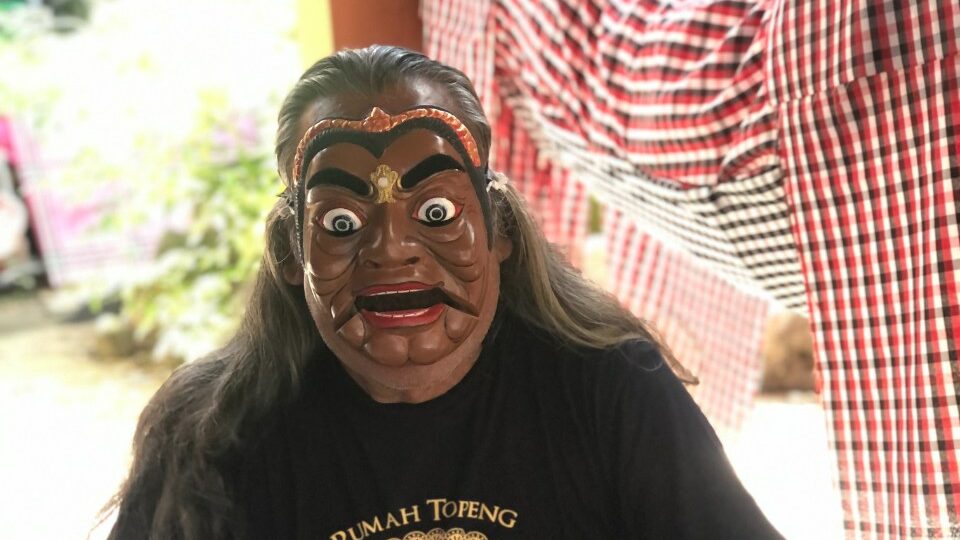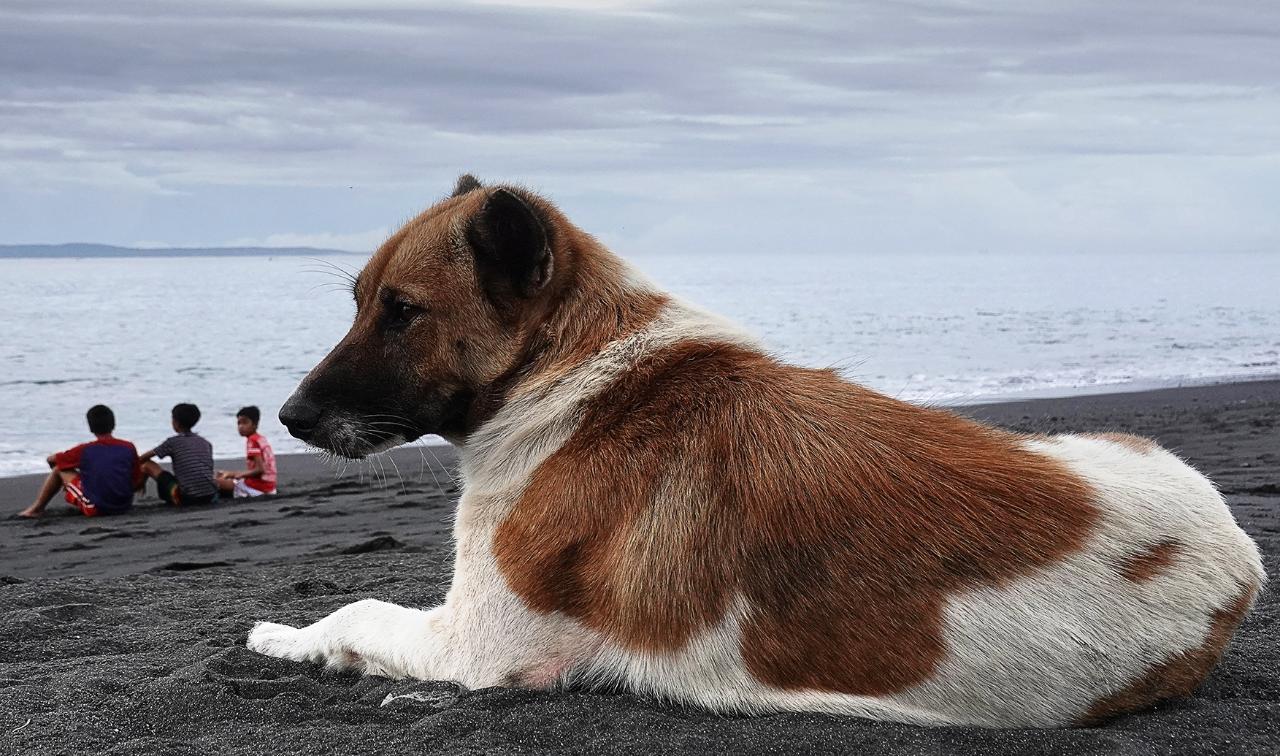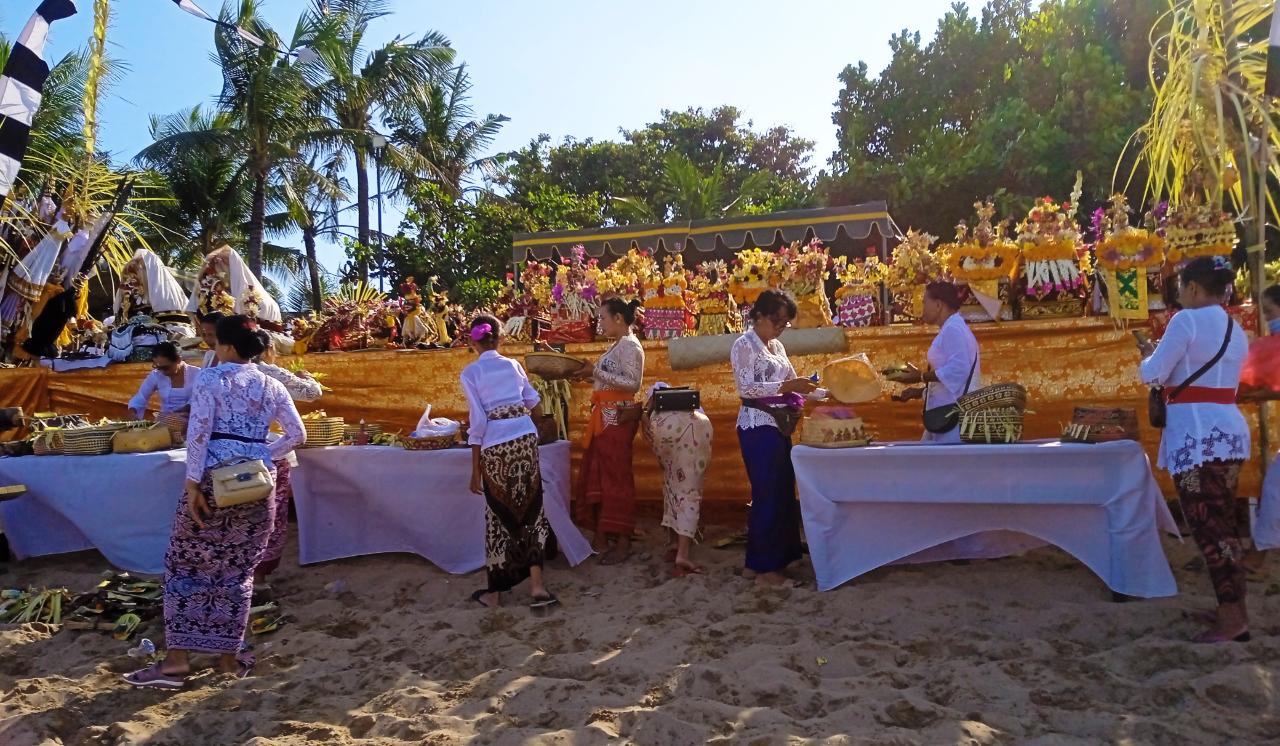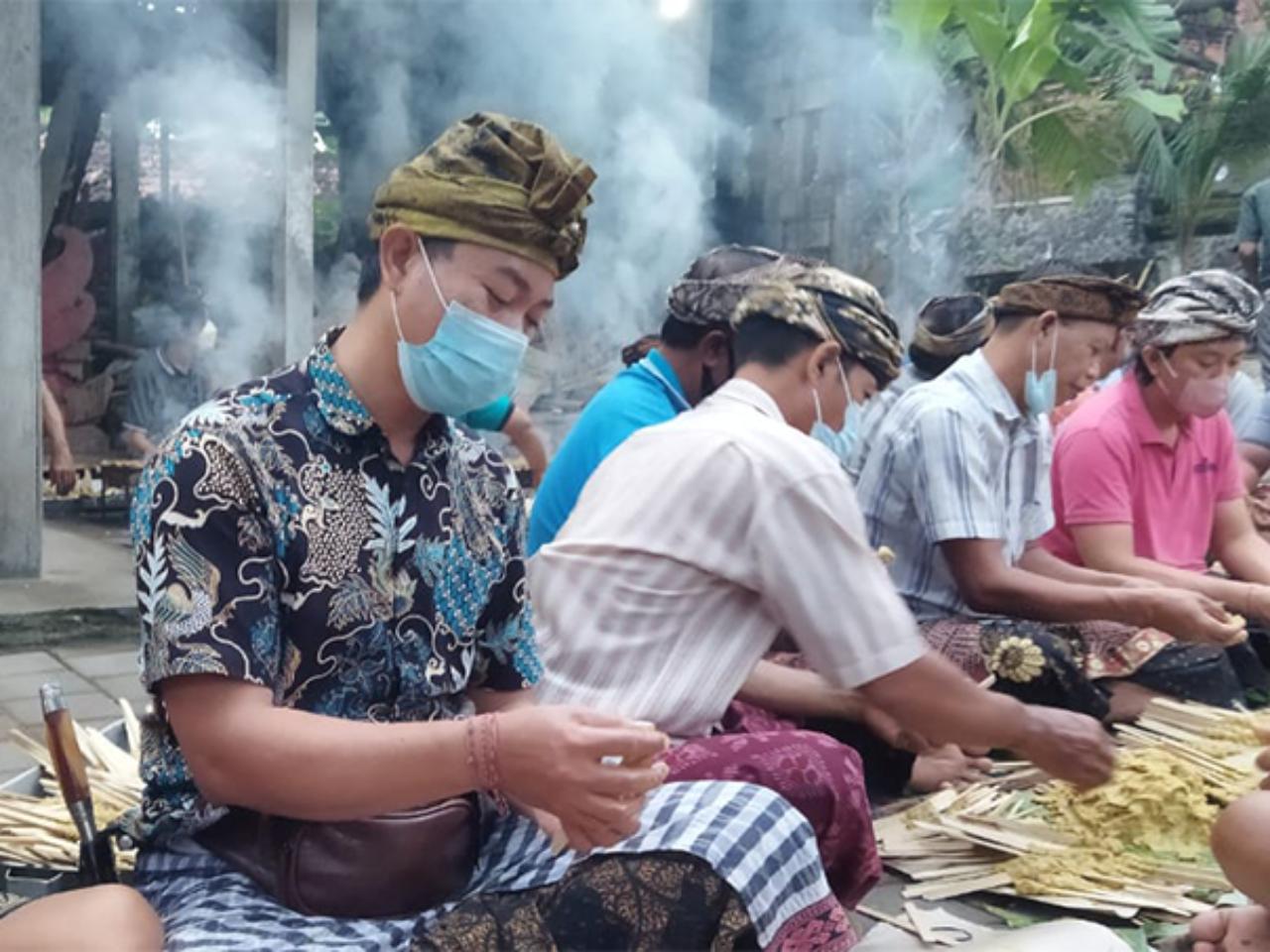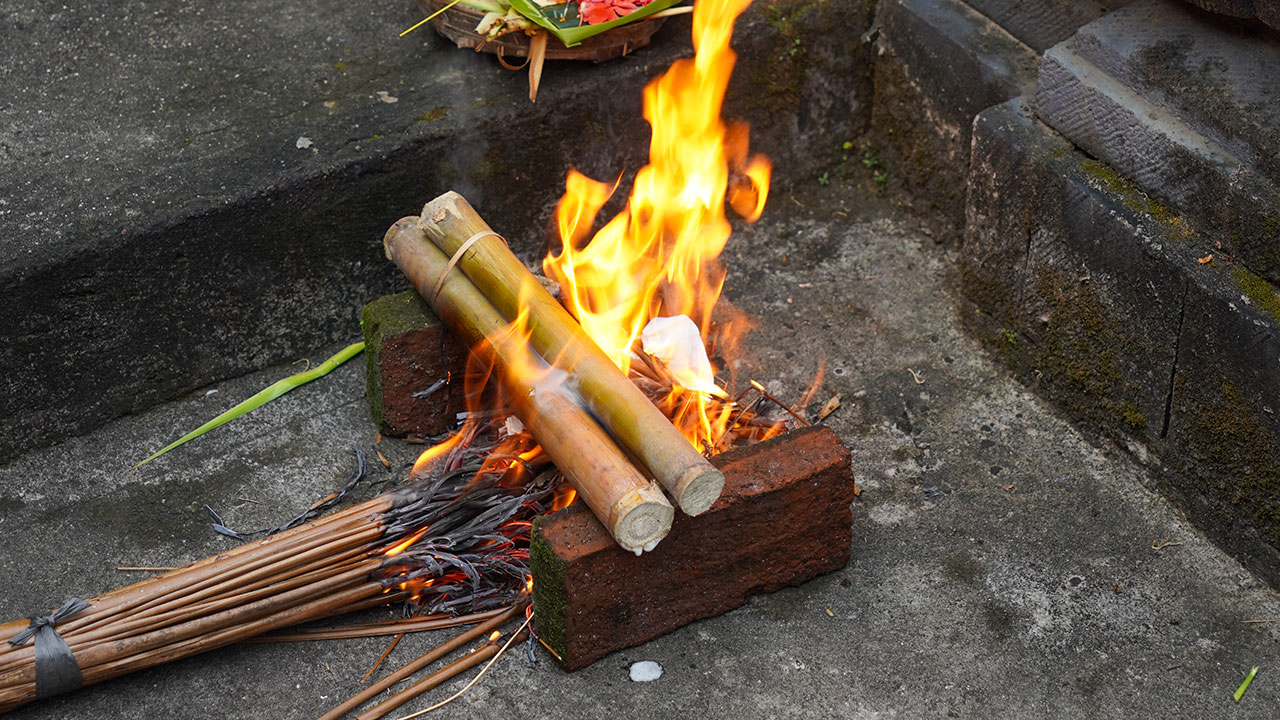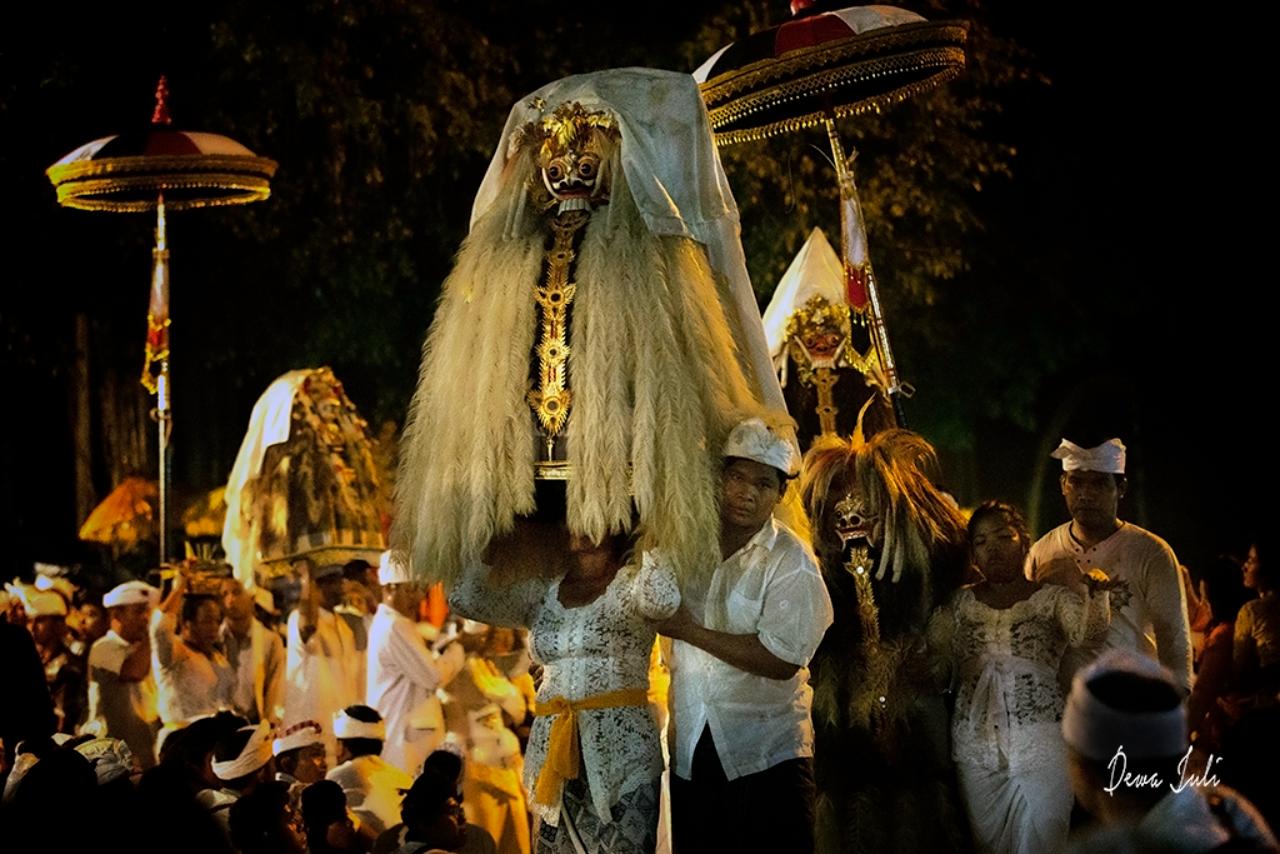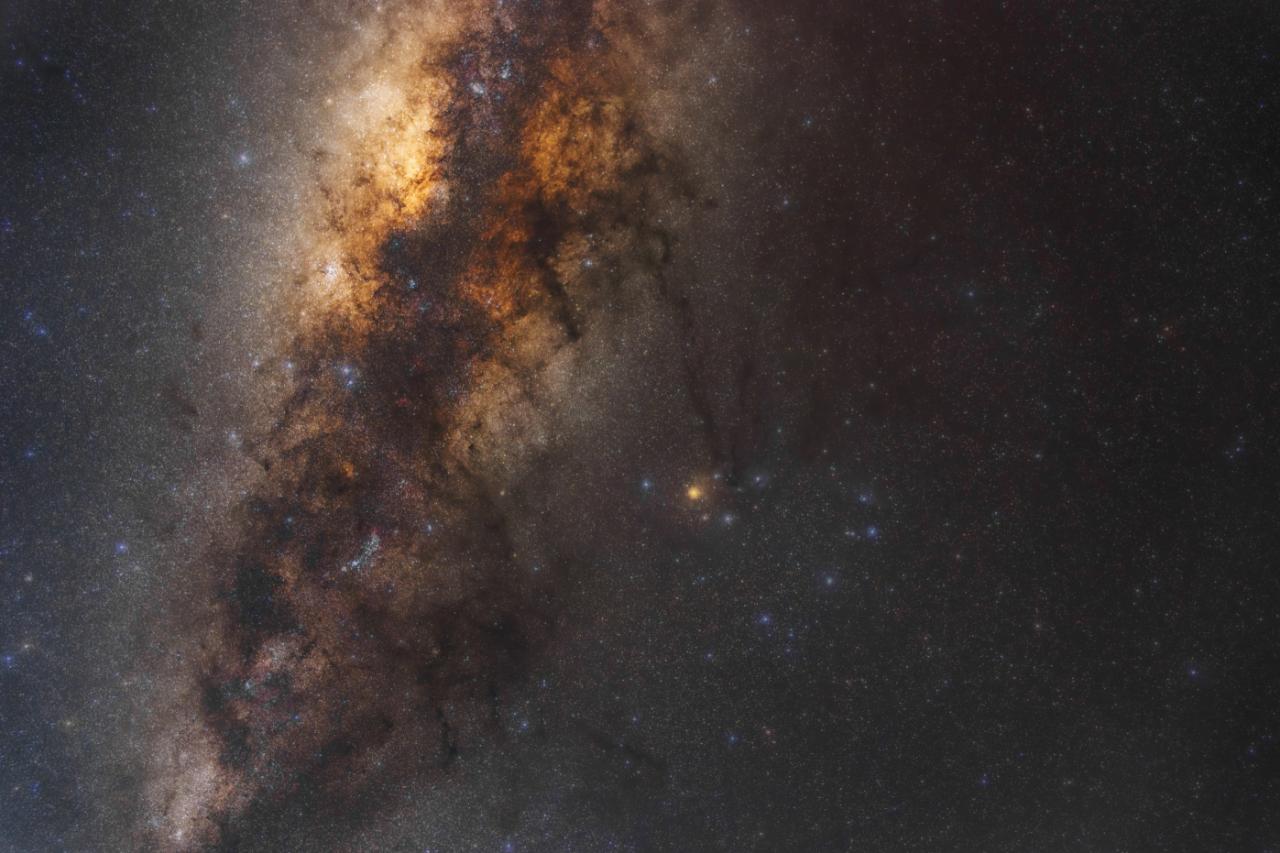The term art or artist in Balinese society is almost never heard of, because art and being artistic has become a part of everyday life. Art is inseparable from the customs, mythology, and philosophy that live in Balinese society. However, the collective mind of society is open and accepting to new values and modernization, combining modern changes the classical arts and traditions.
From the moment I met I Made Kara, he drew me into a deep story with details of characters and figures in myth and legend that I had learnt about when I was a school girl. I have never known that Gajahmada or Jirnnodhara, the legendary prime minister of Majapahit, was not only an expert in war strategy but also shrewd and cunning. Or, that Rangda, the black widow in Balinese myth, was dearly missed by her ex who was a king and cast a spell on her and threw her away from the palace to the cemetery. Upon realizing his mistake, the king was desperate to be reunited with her.
I Made Kara is a Sangging, a wooden masks craftsperson and also a painter. He is running the “House of Mask”, a workshop here in Sanur where people can come to learn how to craft a mask using traditional tools and entire process is done by hand. A sangging must also master and understand all things spiritual to be able to visualize the character in his work.
Balinese masks are made of wood, usually ylang (Cananga odorata) and pule (Alstonia scholaris). What struck me was that the final result of the mask was as precise as if it was machine-made. It takes approximately 35 days to turn a log of wood into a final mask with individual and unique character, accessories and colour.
I Made Kara, as an artist, is committed to giving a mask-making course to school students as a “ngayah” which essentially manifests his sense of devotion to God in the form of serving community.
Balinese masks are a tradition and work of art that need to be preserved. Masks are used in many rituals and ceremonies such as those to repel negative energy (bad luck), calling down the rain, and curing or repelling diseases. On the surface, they are entertainment but they have a deeper significance culturally.
The main function of masks in Balinese culture is to show the identity and character in a performance; instead of wearing makeup, dancers wear masks in their performances.
In the process of sculpting the mask, I Made Kara begins with meditation, calling for some spiritual intelligence, and when the dancer finally puts on the mask, it’s as if the mask shows this spiritual connection in the expression, being soulful and alive.
